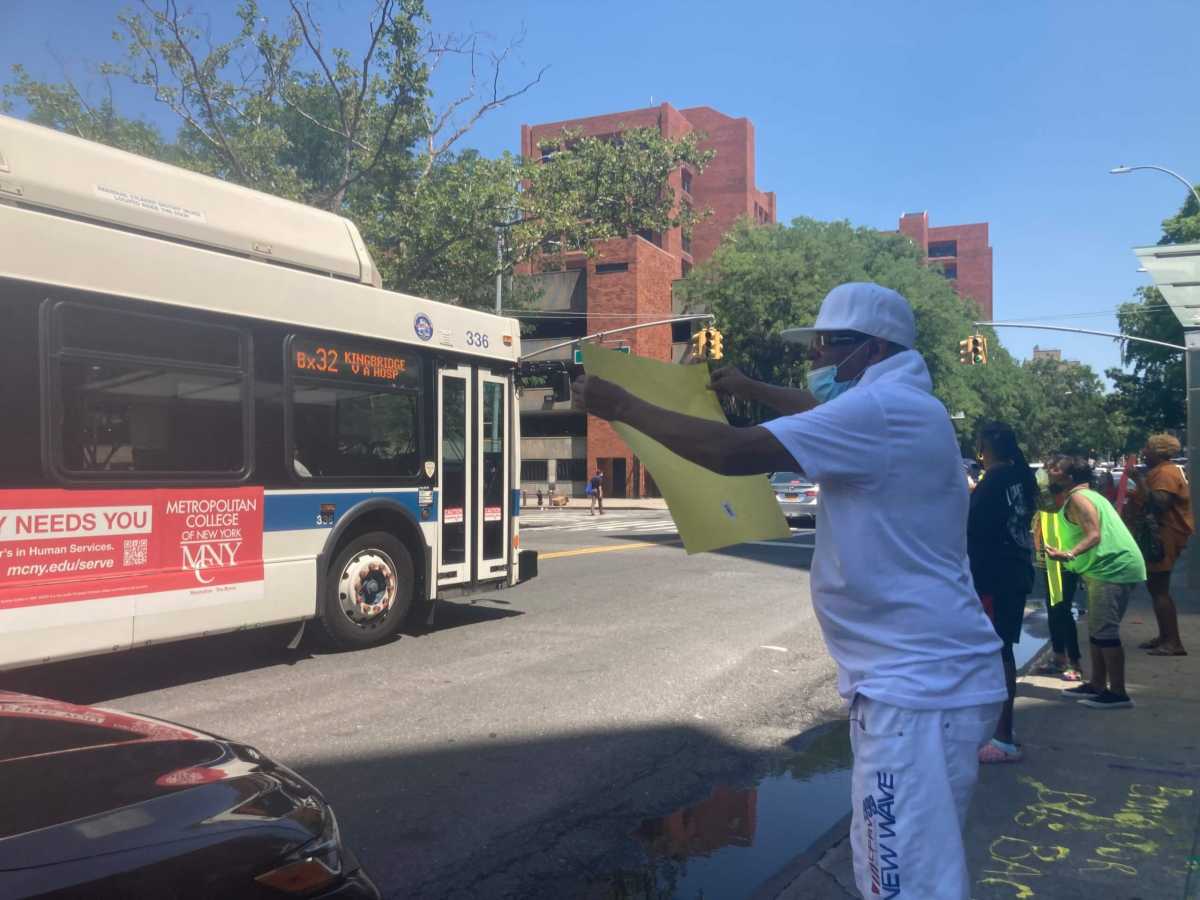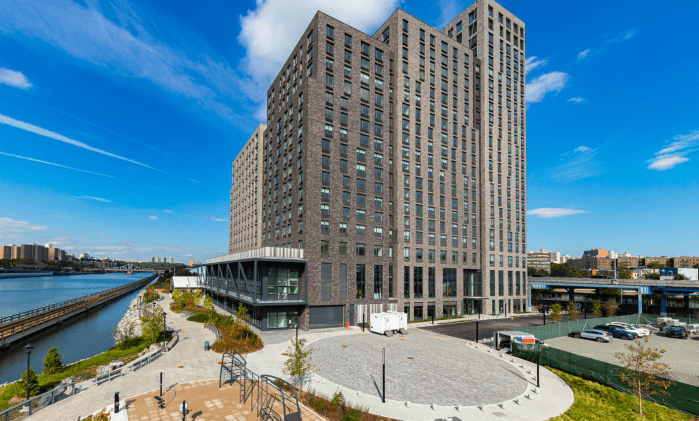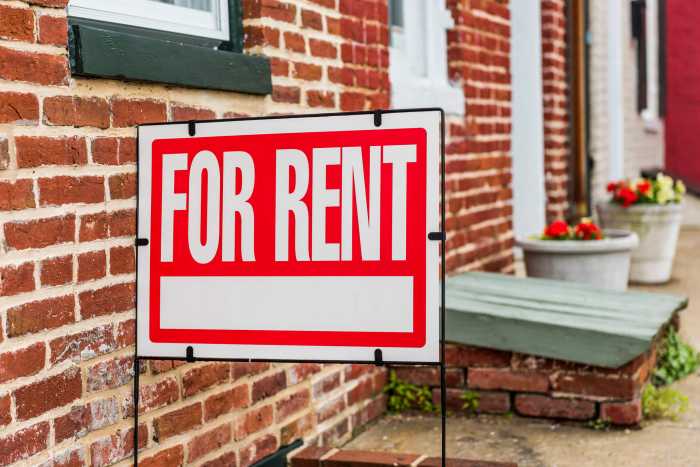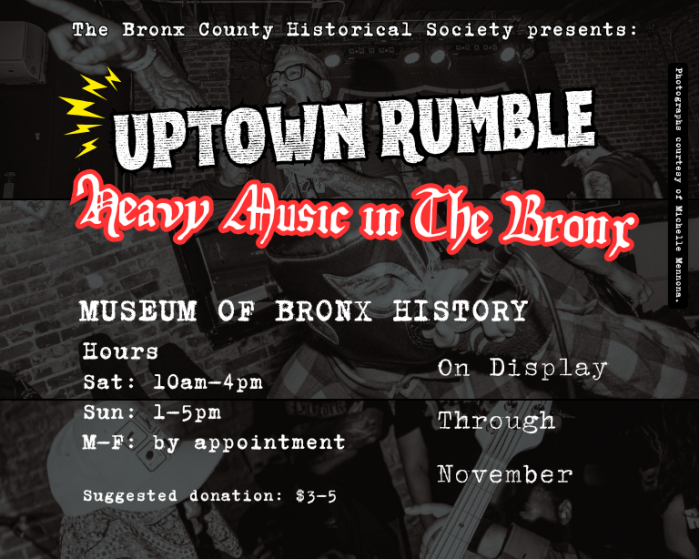If you ask Ricky D. Williams where the Bronx starts, the longtime resident will tell you it starts in Mott Haven on Morris Avenue, where you can see slivers of the Manhattan skyline.
So it’s “criminal” in the eyes of Williams and other Mott Haven residents that the June 26 launch of the Bronx Bus Redesign — which reconfigured the Bronx’s 46 bus routes — removed the East 143rd Street and Morris Avenue stop from the Bx32 bus route.
“These folks are gon’ have it very hard because it’s hard to get these feet up and moving in the winter time, and a lot of these people they got walkers, wheelchairs and other ailments that prevent them from making long walks to the bus,” said Williams. “A lot of people are handicapped, got doctor appointments and don’t have a reliable and easy bus stop available.”
According to MTA officials, the nearest northbound stop is 500 feet away, but residents of the Paterson Houses where the aforementioned stop bisects the housing complex, say it is too far and too dangerous for the elderly to walk over to.
Some patrons like Ada Martinez, who required the use of a wheelchair, didn’t even know their stop had been taken away, as she watched the Bx32 roll right past her.
“I’m sad because this community doesn’t have our bus right now. They got people like me with a wheelchair and other people with walkers who rely on this stop to make appointments, to get downtown without hassle,” said Martinez. “It’s sad because I don’t remember being asked if I wanted this stop removed or changed. Because the answer from all of us is no.”
In its final Bronx Bus Redesign portfolio, the transit agency acknowledged a high-density area of disabled residents in Mott Haven, as well as the central Bronx along the 4 and BD subway lines, and in Claremont Village.
Upon its launch, MTA Chairperson and CEO Janno Lieber said the proposal would help the roughly 420,000 daily riders who relied on the bus system pre-pandemic to better get around.
The rollout hasn’t been seamless, however, with Parkchester residents clamoring for the return of a slew of Metropolitan Avenue stops that were removed from the BX4A bus line, but have since been restored.
The issue for many is that the concerns of Mott Haven residents during the transit agency’s public comment process for the redesign had not been thoroughly taken into consideration when removing stops.
On the first official day of the overhauled routes, the transit agency deployed agents at bus stops, handing out pamphlets detailing the changes. However, many like Terrence Parker, a West Farm native felt blindsided by changes to his Bx36 work commute, which skips over several stops on Tremont Avenue, where he’s accustomed to catching this morning bus.
“I just don’t get it,” said Parker, who works as security guard in Brooklyn. “Commutes are a routine. Why would you mess with everyone’s routine, without even the courtesy of asking us if we wanted to keep those stops.”
And even when the MTA held public forums in the Mott Haven area regarding the changing bus routes, local organizers told the Bronx Times that meetings were either on such short notice or unable to be attended by residents, whom the routes changes would affect the most.
“A lot of times our seniors are not gonna go far to go to a meeting. People with disabilities are not gonna go far to go to a meeting,” Clarisa Alayeto, a judicial delegate in the borough’s 84th Assembly District. “And so you bring the meeting here to where they are, and then we host a meeting and, and we could talk about it, but that didn’t happen.”
In response to these statements, the MTA told the Bronx Times that feedback for the redesign has been “overwhelmingly positive.”
Patron discontent with the bus redesign is the last thing the agency wants to deal with amid declining ridership and a dire financial outlook.
Federal pandemic relief money for the MTA will not be able to cover the agency’s multi-billion dollar deficit after 2024, transit officials said during a monthly MTA board meeting on Monday.
Ridership on New York City subways, buses and commuter-rail lines is projected to reach 74% of its 2019 levels by late 2024, which is down from a prior forecast of 86%, according to a fresh analysis by McKinsey & Co. released Monday.
System-wide ridership is expected to reach 80% by the end of 2026, according to the report.
-Caroline McCarthy contributed to this report
Reach Robbie Sequeira at rsequeira@schnepsmedia.com or (718) 260-4599. For more coverage, follow us on Twitter, Facebook and Instagram @bronxtimes.




















